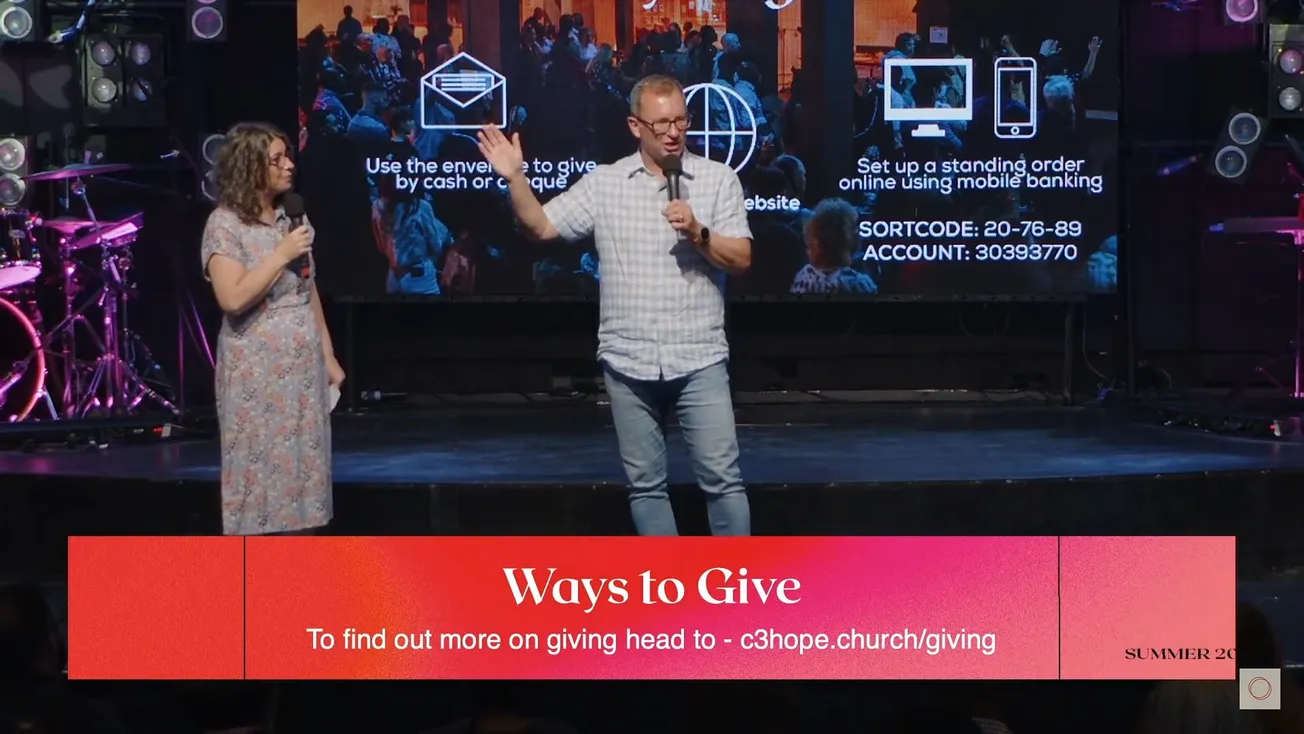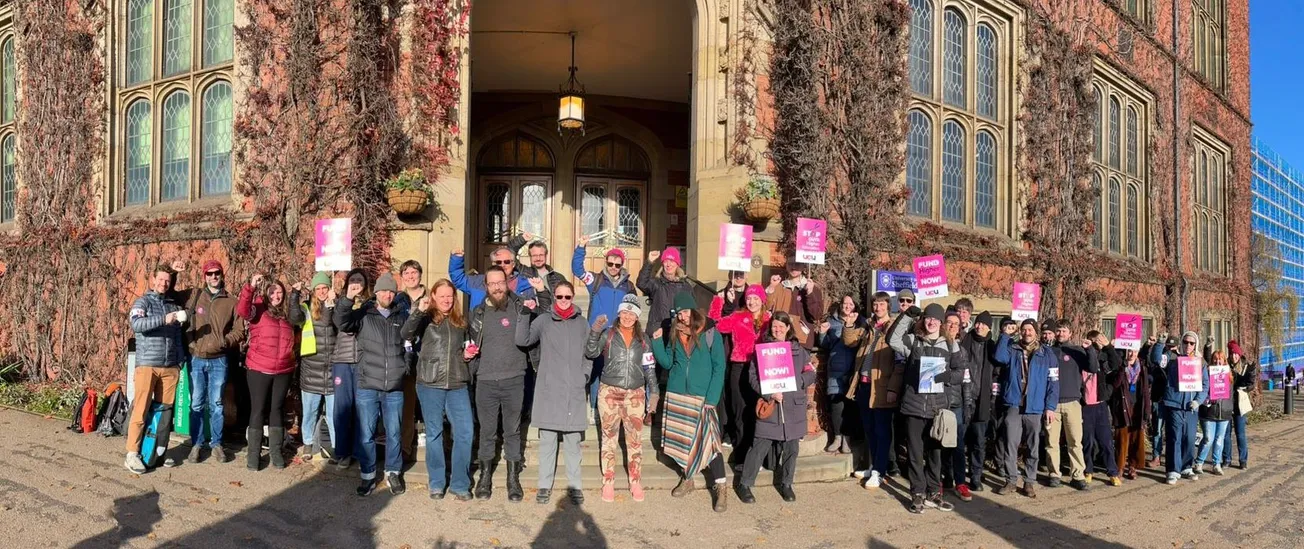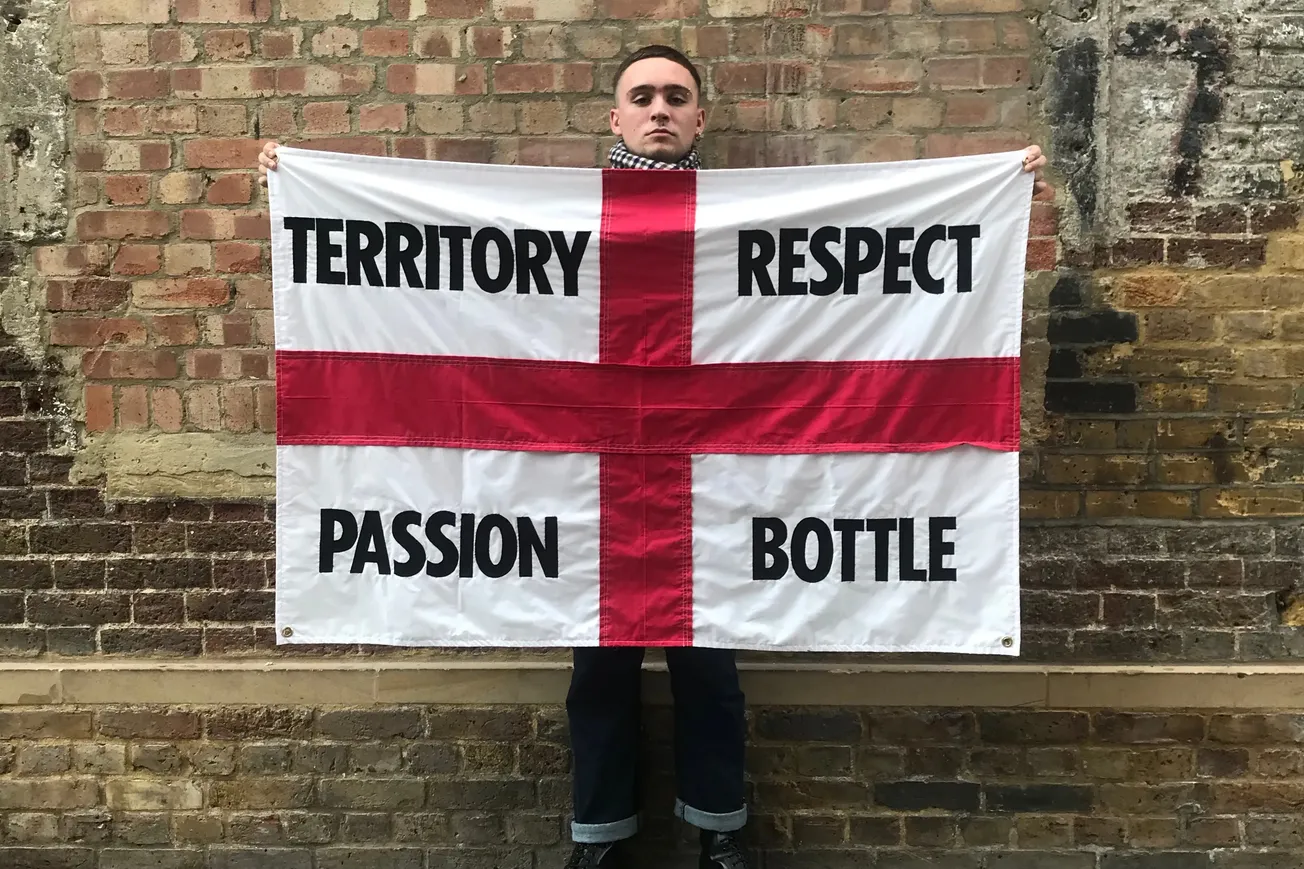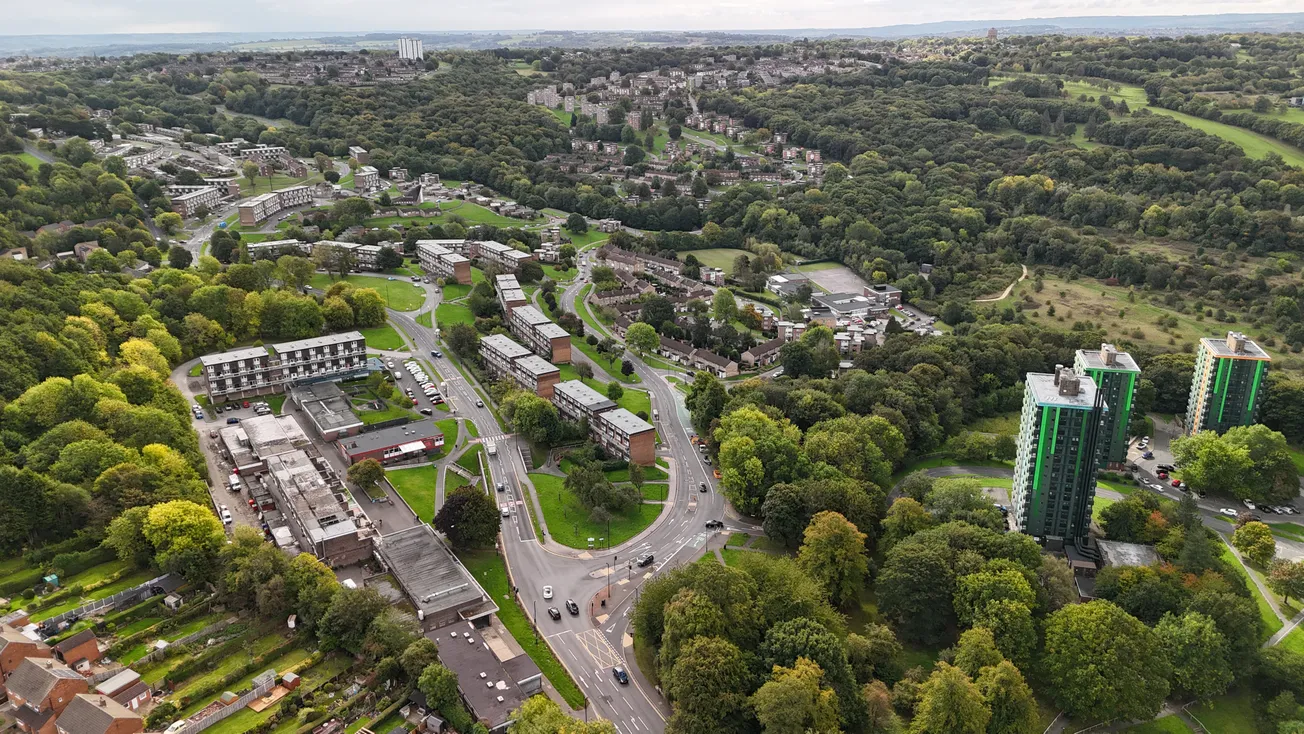Three years ago, a Sheffield church weathered a long storm. Its charismatic founder? Gone — he resigned after being accused of racism. Following his departure, an internal investigation claimed that an “underlying toxicity,” of which many members still seem largely unaware, had been trickling down to all aspects of church life for years.
A report produced at the time reveals some members of all races had “often felt controlled, manipulated, coerced and even threatened at times” by their spiritual leader, while other senior figures felt “pressure to conform and strongly encouraged to protect the honour of the leadership at every eventuality”. According to the report, it was natural in this environment for problems like racism to go unchecked, given the church lacked transparency and accountability and “vilified those with opposing viewpoints”.
The words quoted above were written by Colin Davies in the final report produced by the church’s investigation. I’m not aware of this when we first meet during my visit to C3 Hope Church one Sunday morning, he’s simply the cheerful man who acts as a kind of compere for that week’s service while the senior pastors are on holiday. It’s only later I discover he is not just another pastor but also the chief executive of C3 Trust UK, the charity that runs C3 Hope and four far smaller churches in the north of England.

Davies is middle-aged now, but he joined the church in its very first year back in 1991, when he was only 23 years old. The son of a miner and a mill-worker, he tells me he had a good upbringing in his working-class family but was by that point a “lapsed Christian,” having struggled with a number of vices he doesn’t fancy enlarging upon and the sudden death of his brother in a motorbike accident while he was in his teens.
At the time, he hadn’t “particularly been looking for a church” and he’s not the only person who tells me they were in a difficult period of their life before discovering C3 Hope. While he points out it’s not uncommon for people to find their faith after “near-death experiences” or in times of crisis, it’s hard not to recall the allegations made by some ex-members that the church preyed on the vulnerable.
The church’s “Megacentre” just outside Sheffield’s ring road is not a conventional church building by any stretch of the imagination. It was built around the time of WWI as a tool factory and converted into a church with space for 600 worshippers – as well as a nursery, foodbank and other community uses – in 1998, though the transformation was not radical.
The decorations are fairly minimal, such as a string of bunting over one of the noticeboards, and the closest thing to a stained glass window is a picture that appears on the projector at one point during the service. Shortly before my visit, a flood damaged large sections of the carpet to the point where they had to be torn up, so in many places the original concrete floor is bare.
No grandeur? No problem. The congregation’s enthusiasm seems undimmed by the surroundings. A live band plays gospel songs to a crowd of a few hundred people, who are a mix of ages and races. They stand for this entire segment, some with hands moved skywards — perhaps by joy or faith. I’m told that during term time, when the students return to the city, the service gets even more lively. As Colin puts it, C3 Hope is a church that has worked incredibly hard to change and has “risen from the ashes of a very difficult situation”. There’s work to be done but he’s firm on this point: “We are a different church altogether than we were three years ago.”

Richard Turner, an ex-member who left the church a few years before the investigation took place, doubts that’s possible. He was a member of C3 Hope’s sister church in Liverpool, but regularly visited Sheffield and worked for the church’s Sheffield-based charity. Prior to my visit to the church, he warns me that I’m likely to leave the service thinking it was amazing.
Based on his past experiences there, “they try to make you feel high on the atmosphere. Everyone is ridiculously happy, almost uncomfortably so.” While he gets the impression the church is “probably a bit better,” he suspects the influence of its founder and leader of almost three decades is likely “still engrained”. In his opinion, “some of the people there are probably nice," but after decades in the church, "they’ve lost touch with reality, even if they are trying to put things right.”
That said, Richard has for years been outspoken about his resentment towards his former church, which he now views as a cult, and Colin’s bias is obvious, given he runs the charity that runs C3 Hope. I’m eager to hear from the church’s “normal members” and, during the service at the Megacentre, get chatting to the woman in the seat next to me, a care worker named Julie.
Now 66 years old, she was first “saved” in her early 20s (before which she tells me she was “on a highway to hell”) and a member of several other churches before joining C3 Hope the better part of a decade ago. I ask her what she remembers of the church’s founder, Dave Gilpin, and his wife Jenny. “They were wonderful,” she says, “absolutely lovely, you couldn’t wish to meet two nicer people. A lot of us were really sorry to see them go.” She’s aware there were allegations at the time that Dave was racist, which she doesn’t believe at all. “The devil attacks people and, the higher up you get, the more attacked you get.”

How did Hope get here? C3 Hope (or Hope City Church, as it was then known) was founded in 1991. According to an interview Dave gave to the Liverpool Echo, it was inspired by seeing coverage of the Hillsborough disaster from his home in Australia. Though born in Birkenhead, he’d had no plans to return before that day but said it “flicked a switch” and “pulled [him] back to [his] family roots and the UK”; he describes the church as a source of hope “born out of tragedy”.
While the congregation was only around 30 people in its first year according to Colin, by 2014 the church had grown large enough to set up several subsidiary churches across the world, including one in Ghana. The Sheffield flock alone had expanded so much that, like a hermit crab looking for its next shell, it began dreaming of new surroundings. The vision was an auditorium with 1,500 seats, which would be purpose-built in the village of Waverley, near Rotherham.
Such rapid expansion and bold plans for the future required money, and lots of it. In addition to expecting the congregation to “tithe” – donating a tenth of their income for the general upkeep of the church, which is common practice in many Chrisian churches – C3 Hope had additional annual fundraisers called the “Dream Offering” where people were encouraged to give far more. In 2015, a brochure published by the church set that year’s Dream Offering goal for the Sheffield congregation alone at £1 million, and invited members to donate £500, £2,000, £4,000 or an amount of their choice.
At one Sheffield service, Richard remembers hearing a man announce he was donating £9,000. Certainly, in his 2002 guide to leadership — boasting a more brutal title than your average HR tome (Jesus, Save Me from Your Followers!: Confessions of a Frustrated Leader) — Dave Gilpin wrote of “a car being sold and a wedding being downsized” by members of his congregation keen “to offer the Lord the financial savings”. Concerningly, in the same book, he repeats the story of a woman who cut off her engagement due to her commitment to the church, revealing in parentheses that “her fiance requested that she relocate”.

Choosing his words carefully, Colin acknowledges there used to be “quite a strong push to raise money” but, since 2020, the church no longer “puts people under pressure to give” and its fundraisers are “far more low-key”. At one point in the service, volunteers pass large plastic buckets down each row of seats to collect donations – with Colin on stage encouraging those in the crowd to “give back to Jesus” – and a graphic pops up on the projector informing people they can donate in person, via the church’s website or by setting up a standing order. However, the kind of comments Richard claims he heard Dave make in the past, informing people they must donate to be part of the community or that doing so will “unlock a break-through” in their life, are gone.
Colin tells me that, if he were to compare the attitude towards fundraising in this last three or four months with a similar period five years ago, “they are incomparable.” The target set for the Sheffield church this year, now called the Vision Builders offering, was a comparatively very humble £100,000. While this new low-key vibe doesn’t stop C3 Hope and its far smaller sister churches from raising significant sums – in the 21/22 financial year, they raised £1.2m in donations and legacies, the vast majority of which will likely have come from Sheffield – this pales in comparison to the £2.3m raised in 2020.
I ask Julie if she gives to the church and, while she says she tithes, she wants to make it clear that she doesn’t consider this a donation to C3 Hope. “I’m giving my money to God. God doesn’t need our money, he has all the money in the world, but he does need the kind of heart that would give to him.” The problem, she says, with allowing people to view tithing as a donation to the church itself, is that if “the church does something they don’t agree with, they might take the money back”.
In the end, the move to Waverley was abandoned; a small number of people did request their donations for the project back, which Colin says represented a “not inconsiderable sum”. Normal members of the congregation I speak to don’t seem very clear on why or when this happened – Julie suggests it might have been because of Dave’s departure, another says the church wanted to stay close to its roots in Sheffield – but Colin explains that the plan was scrapped in 2019, when the church realised it was going to be impossible to raise the sum required.

In general, despite the strength of his language in the final investigation report, the impression I get from talking to Colin is that he views the church’s main historic problem as a surplus of ambition. “A multi-million pound organisation is different to running a church of 30 people and, as any organisation grows, the needs it places on its leaders also grow.” The church’s leaders “probably didn’t have the overall capability” to do things the way they would have in a perfect world. “It could be argued that perhaps overstretching ourselves was part of the pioneering spirit.”
While he says he no longer has any personal relationship with Dave or Jenny, he points out that forgiveness is a tenet of the Christian faith. “Despite everything that went on here… at the end of the day, Dave and Jenny did succeed in building a church, which went from nothing to thousands of people across the world.” His assessment of Dave in particular hasn’t changed much from the first impression he formed in 1991: “an interesting guy, quirky, enthusiastic and Australian”.
Richard might agree with “quirky” – he remembers being bemused at one C3 Hope service when they played videos of Dave preaching from his hot tub – but he otherwise takes a far harsher view. He points out another passage from Dave’s book, in which he describes how his wages massively increased “in line with a prophetic word from a minister based in America,” at a time when the church was “constantly in the red”.
As confirmed by Colin, during his final years at C3 Hope, Dave was making more than £90,000 a year and, according to Richard, the Gilpins “lived a life of luxury” and were constantly travelling. “I’m pretty sure they’re set for life.” He says the church even paid for art painted by Dave, which was then hung up around the building, and C3 Trust UK’s annual accounts do show that, between 2008 and 2010, a company owned by Dave and his wife was paid more than £13,000 for “expenses, artwork and other resources”.
The church under Dave’s leadership could also be very generous, although Richard views this as yet another manipulation technique, intended to inspire loyalty and reward compliance. He sends me a screenshot of an Instagram post from 2018 which said the church sent a young couple – a pair of youth pastors who “go the extra mile all the time” – on an all-expenses paid holiday. In the same year, the annual accounts for C3 Trust UK show Colin and his wife Dawn were given £2,500 as a gift to celebrate their 25th wedding anniversary.
When I ask Colin about Dave’s salary, he admits that there was once a large disparity between the church’s highest and lowest earners but “if you look at any corporate organisation, you will find the same thing”. He tells me the whole staffing and salary structure has completely changed so they wouldn’t entertain someone earning that amount now. His personal salary, as the chief executive of C3 Trust UK, is “probably overall a quarter of what Dave and Jenny were paid”.

Given Dave’s departure and the investigation were prompted by allegations of racism, perhaps the most relevant change at the church is that its congregation, already quite diverse, has become even more so. Colin estimates black people now make up around half the flock every Sunday morning and says the church is doing more to celebrate the contributions of its non-white members. “For me, that’s an incredible turnaround. I love the diversity.” He points out that his son married a girl from Zimbabwe, who he met through the church.
It’s clear an incredible amount of work has gone into trying to change the church – or, as Richard might see it, to create the appearance of change – and the obvious question is whether it might have been easier simply to walk away. Colin says he “never felt prompted by God to leave” but adds that loyalty is probably one of his core traits. “Over 30 years, I have invested my life into the local church, to leave would almost negate that investment.” He concedes there are things he “would have done differently” in the years before 2020, but there are also reasons he took the action he did at those times. “The only thing I can change is the future, rather than the past.”
It’s impossible to know what C3 Hope’s future will be – they are only three years into trying to change a culture that existed for almost 30 – but, at the very least, they seem to be taking the first steps towards accepting their past. It takes a little bit of back and forth to get Colin to send me the full report of the church’s internal investigation but, in the end, he does. While it’s a document that doesn’t pull its punches – one of its findings was that there was “perceived overemphasis on appearance” at the church “seen as being driven by insecurity and a desire for prominence and celebrity” – I also wonder how many members have read it. Even the current state of the church’s Wikipedia page speaks to this tension: it includes a lengthy section titled “Criticism and controversy”. Richard tells me that, for a while, someone kept deleting it or editing it to make the issues sound less severe. Then, one day, “they just gave up”.
Comments
How to comment:
If you are already a member,
click here to sign in
and leave a comment.
If you aren't a member,
sign up here
to be able to leave a comment.
To add your photo, click here to create a profile on Gravatar.







